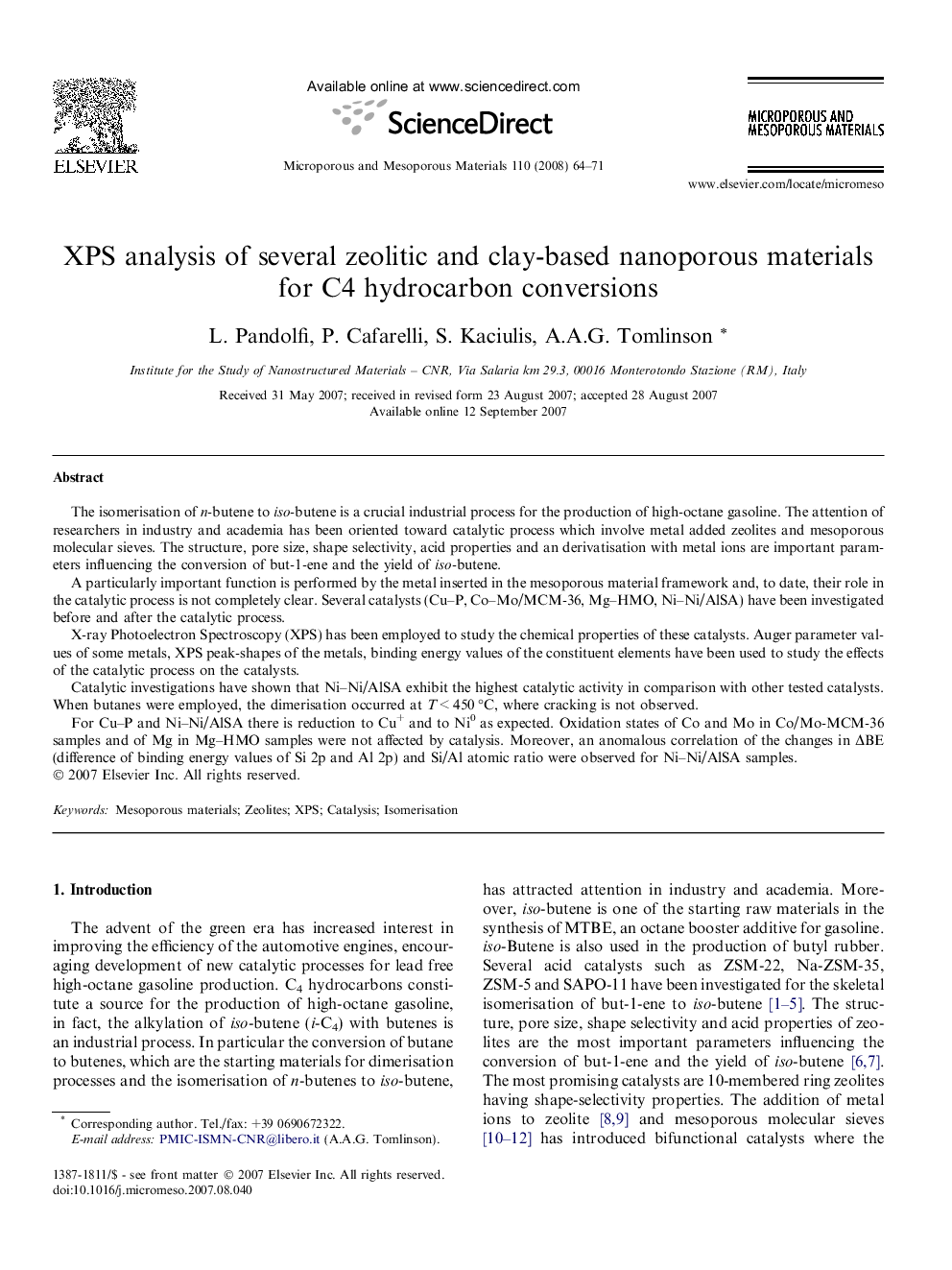| Article ID | Journal | Published Year | Pages | File Type |
|---|---|---|---|---|
| 76310 | Microporous and Mesoporous Materials | 2008 | 8 Pages |
The isomerisation of n-butene to iso-butene is a crucial industrial process for the production of high-octane gasoline. The attention of researchers in industry and academia has been oriented toward catalytic process which involve metal added zeolites and mesoporous molecular sieves. The structure, pore size, shape selectivity, acid properties and an derivatisation with metal ions are important parameters influencing the conversion of but-1-ene and the yield of iso-butene.A particularly important function is performed by the metal inserted in the mesoporous material framework and, to date, their role in the catalytic process is not completely clear. Several catalysts (Cu–P, Co–Mo/MCM-36, Mg–HMO, Ni–Ni/AlSA) have been investigated before and after the catalytic process.X-ray Photoelectron Spectroscopy (XPS) has been employed to study the chemical properties of these catalysts. Auger parameter values of some metals, XPS peak-shapes of the metals, binding energy values of the constituent elements have been used to study the effects of the catalytic process on the catalysts.Catalytic investigations have shown that Ni–Ni/AlSA exhibit the highest catalytic activity in comparison with other tested catalysts. When butanes were employed, the dimerisation occurred at T < 450 °C, where cracking is not observed.For Cu–P and Ni–Ni/AlSA there is reduction to Cu+ and to Ni0 as expected. Oxidation states of Co and Mo in Co/Mo-MCM-36 samples and of Mg in Mg–HMO samples were not affected by catalysis. Moreover, an anomalous correlation of the changes in ΔBE (difference of binding energy values of Si 2p and Al 2p) and Si/Al atomic ratio were observed for Ni–Ni/AlSA samples.
